Abstract
The sera of four patients with chronic hemolytic anemia due to cold agglutinins deposited C′ globulins on normal red cells at 37°C. The circulating cells of the patients were heavily coated with C′ complex and were relatively resistant to C′ hemolysis by cold agglutinin. Such red cells were removed from the patients' circulation at an exponential rate with 51Cr t½ that varied from 7 to 19 days. Normal red cells were removed rapidly by hepatic sequestration during the first hours in the patients' circulation. Thereafter, a slower rate of abnormal destruction occurred which was associated with the accumulation of C′ complexes on the red cell and the development of resistance to C′ hemolysis by cold agglutinin. Normal red cells coated with sufficient C′ complex by action of cold agglutinins in vitro to produce resistance to C′ hemolysis by cold agglutinins demonstrated varying degrees of improved survival during the first hours in the circulation of three of the patients.
The levels of serum C′ were reduced in all four patients with chronic hemolytic anemia due to cold agglutinins. Transfusion of large volumes of normal red cells into two patients further reduced serum C′. 51Cr-labeled normal red cells survived longer after red cell transfusions than before, because of less rapid destruction during the first hours in the circulation. The reduction in serum C′ levels appeared responsible for the improved survival.
In subjects without cold agglutinins, the presence of the spleen decreased the survival of red cells from a patient who had previously undergone splenectomy. Splenic removal also predominated in the reduced survival of autologous red cells in one patient. Neither hepatic nor splenic mechanisms predominated in removing autologous C′-coated cells in the other two patients.
Full text
PDF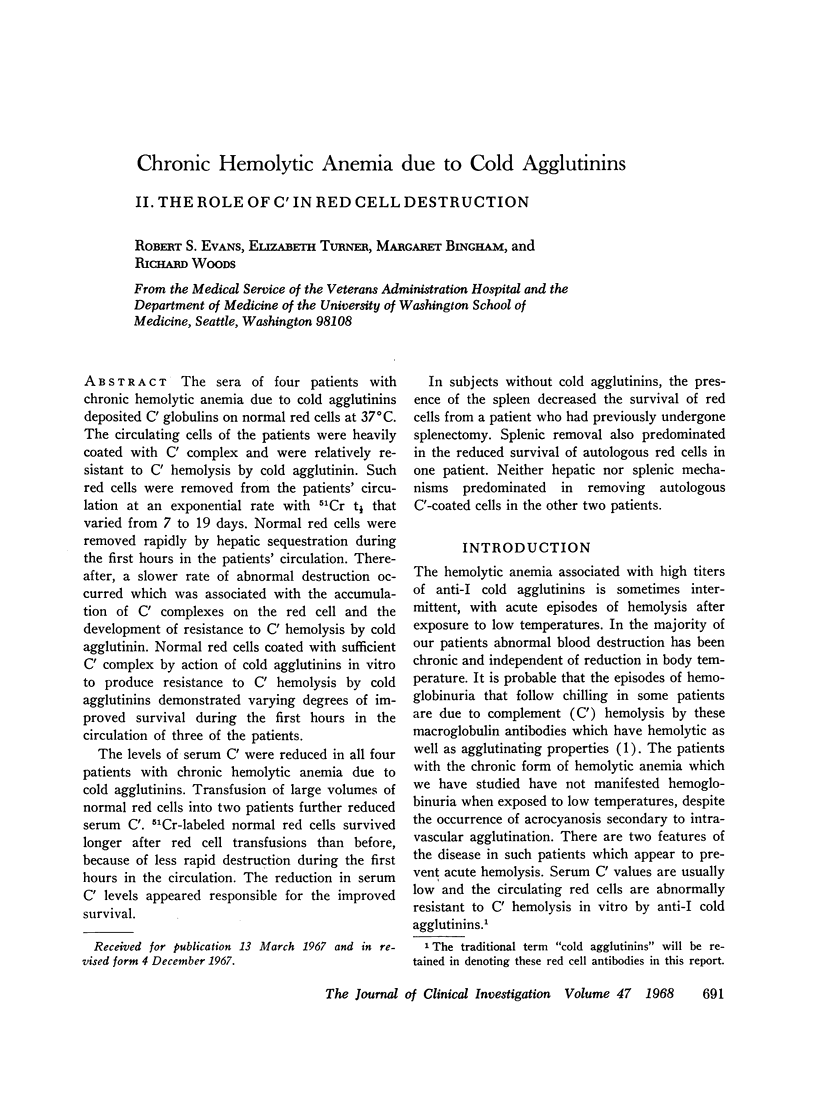
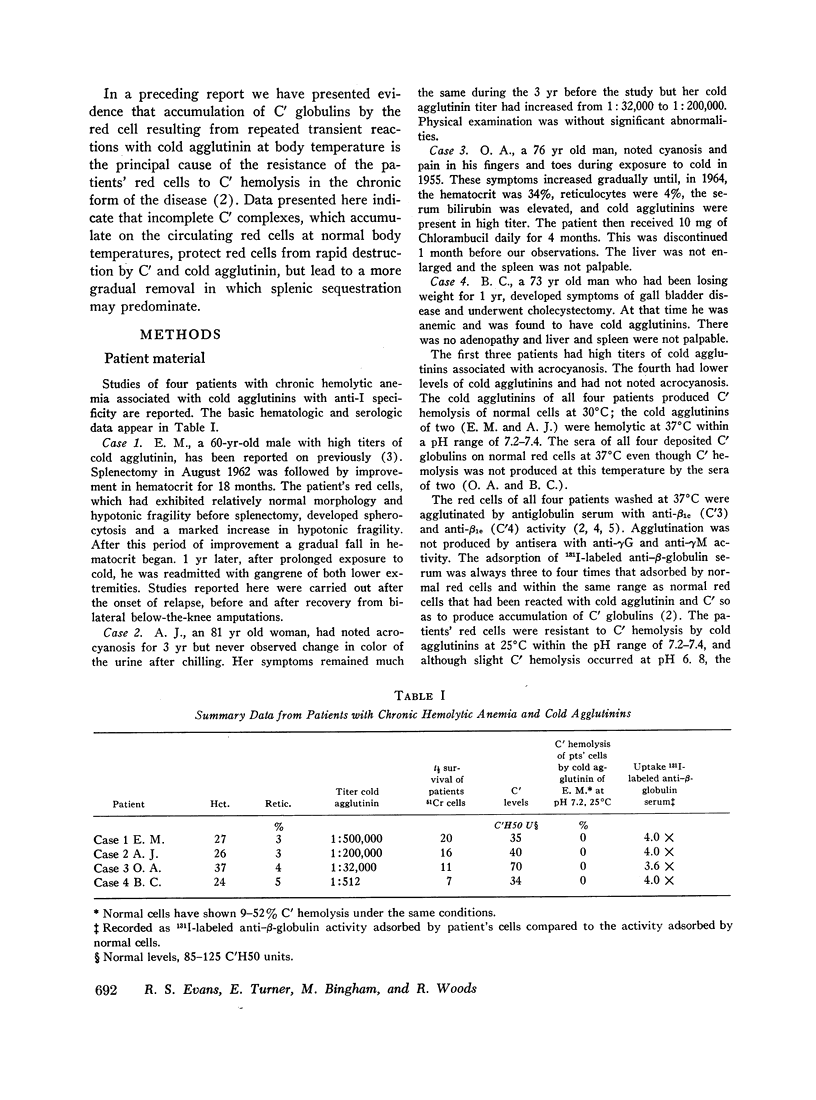
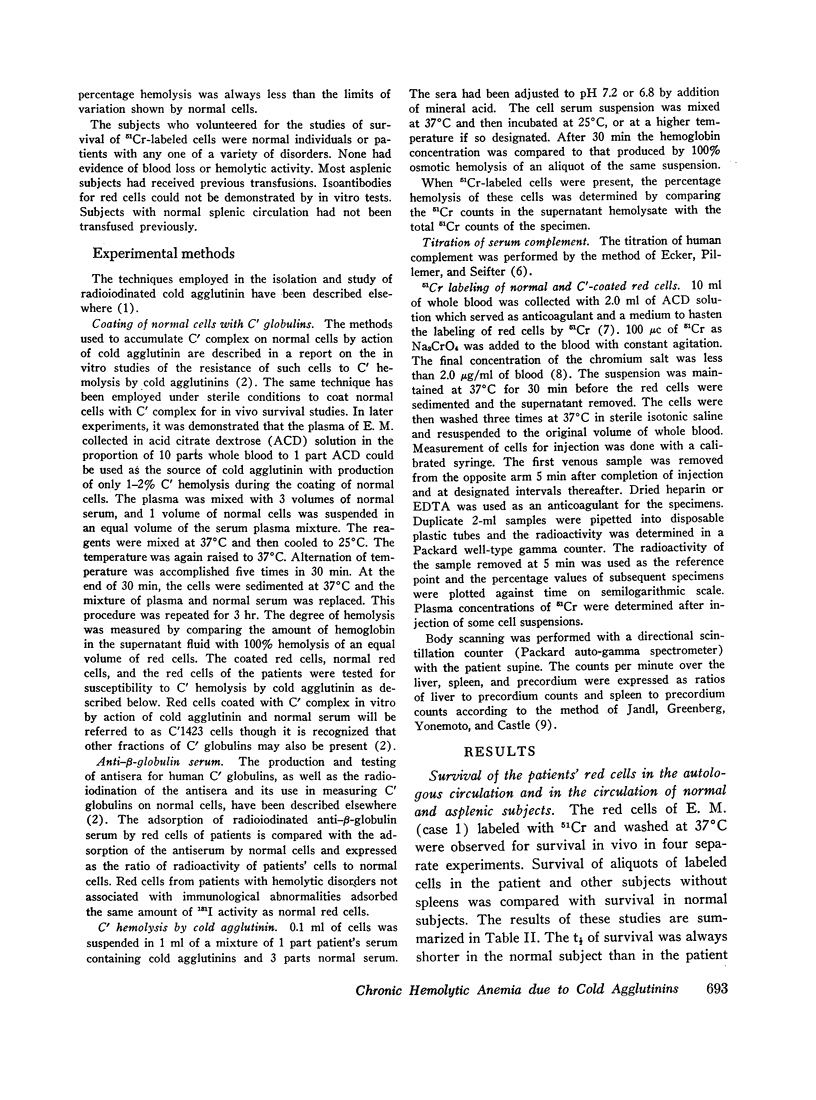
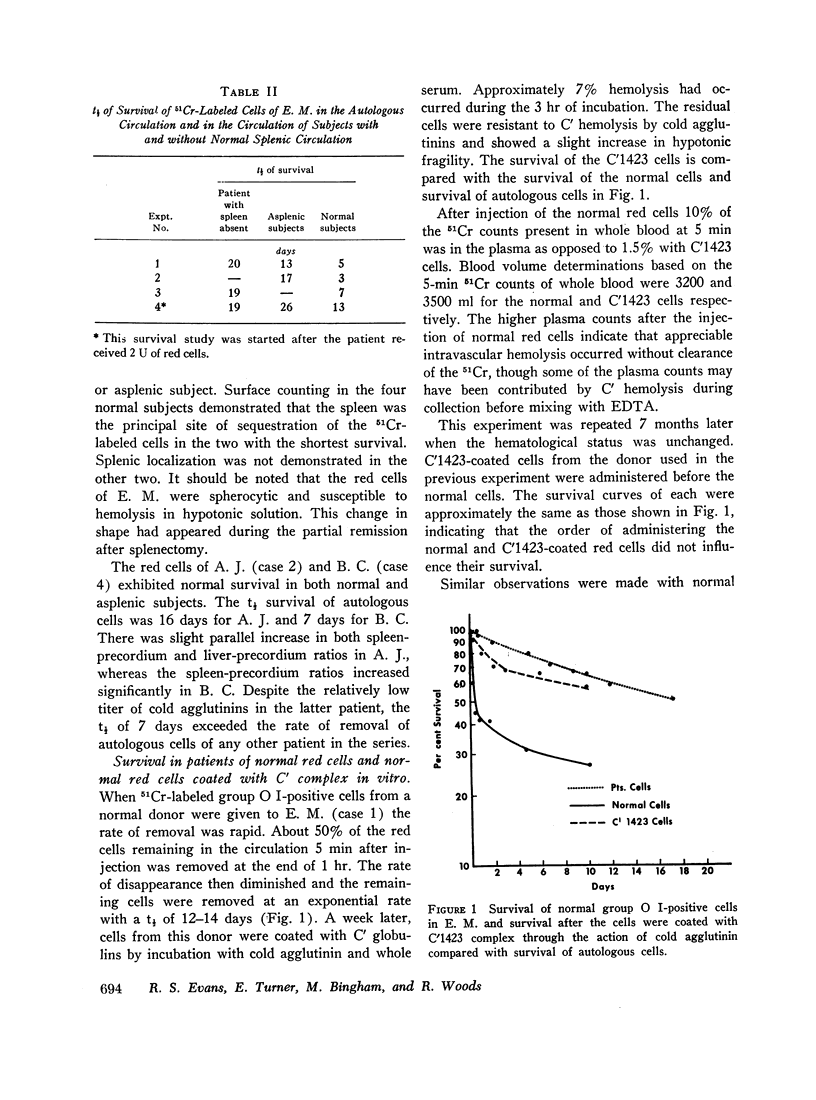
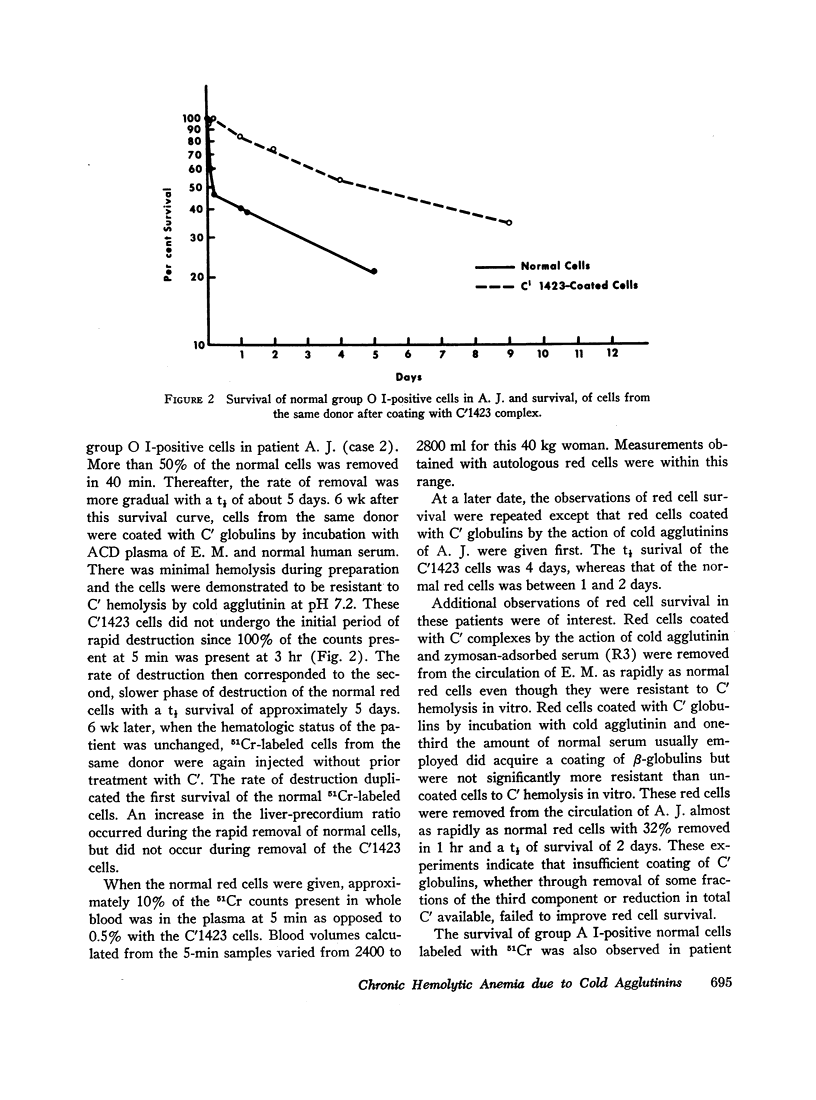
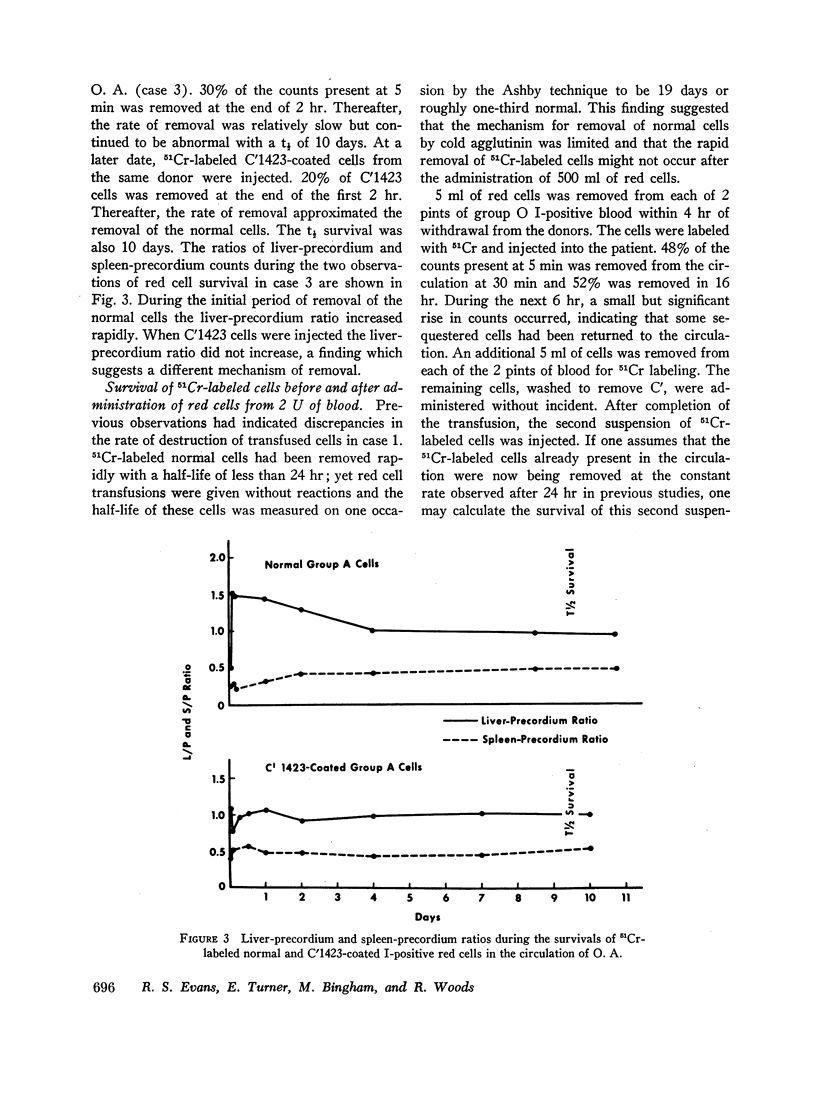
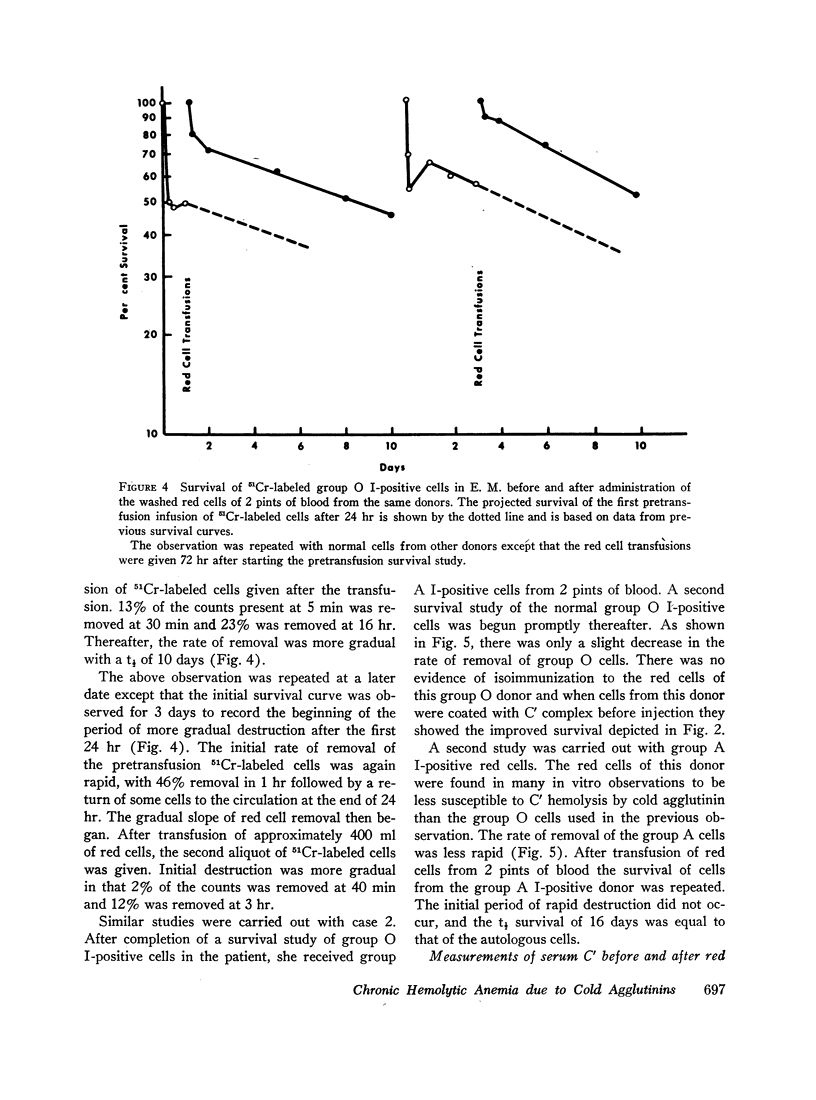
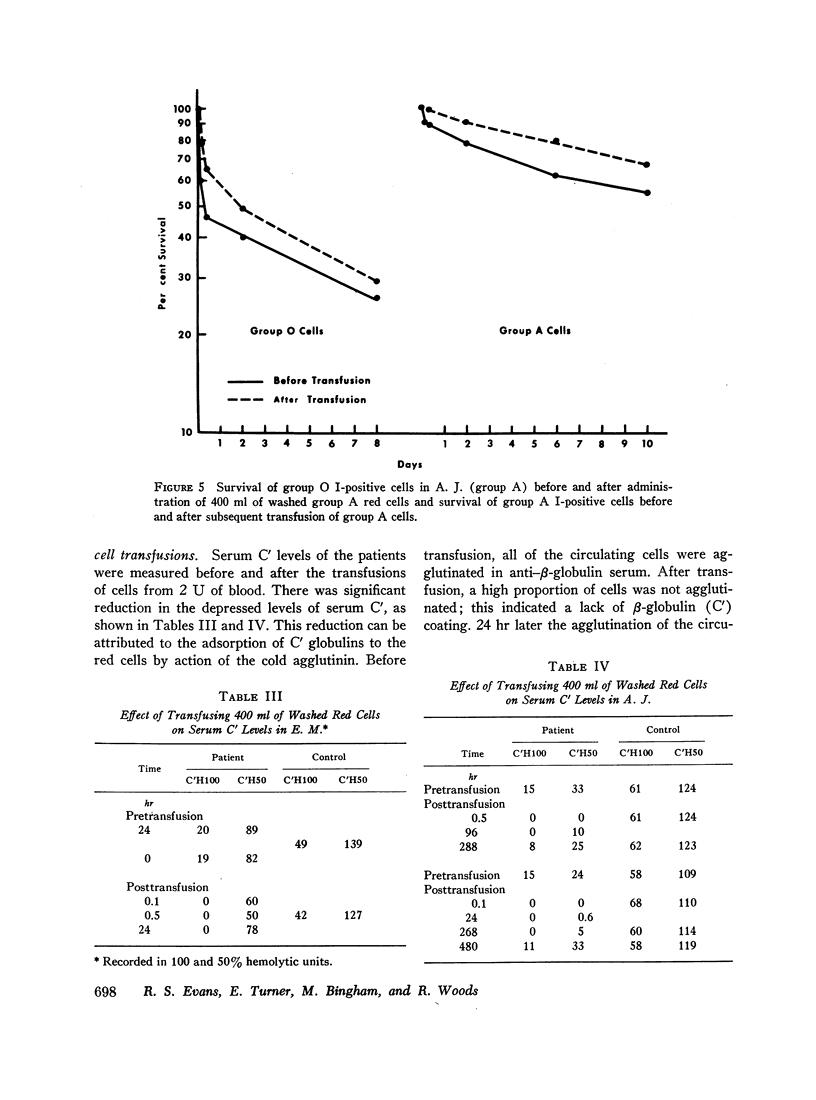
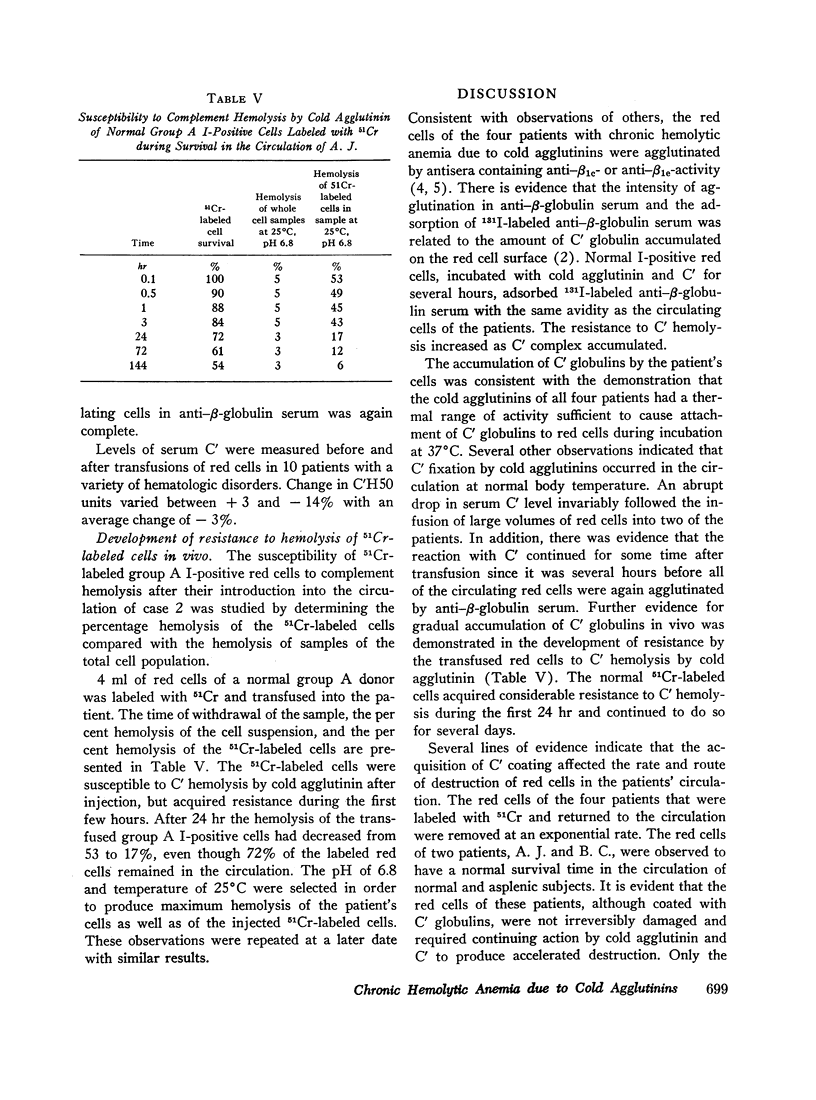
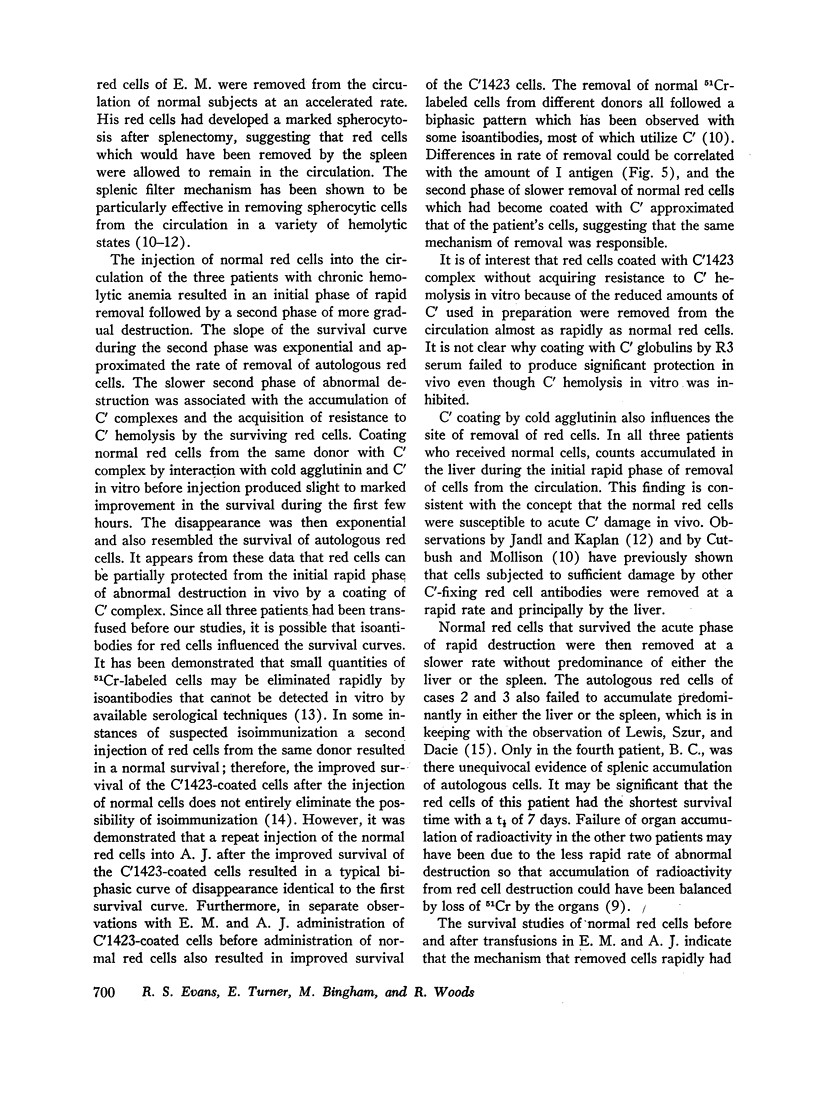
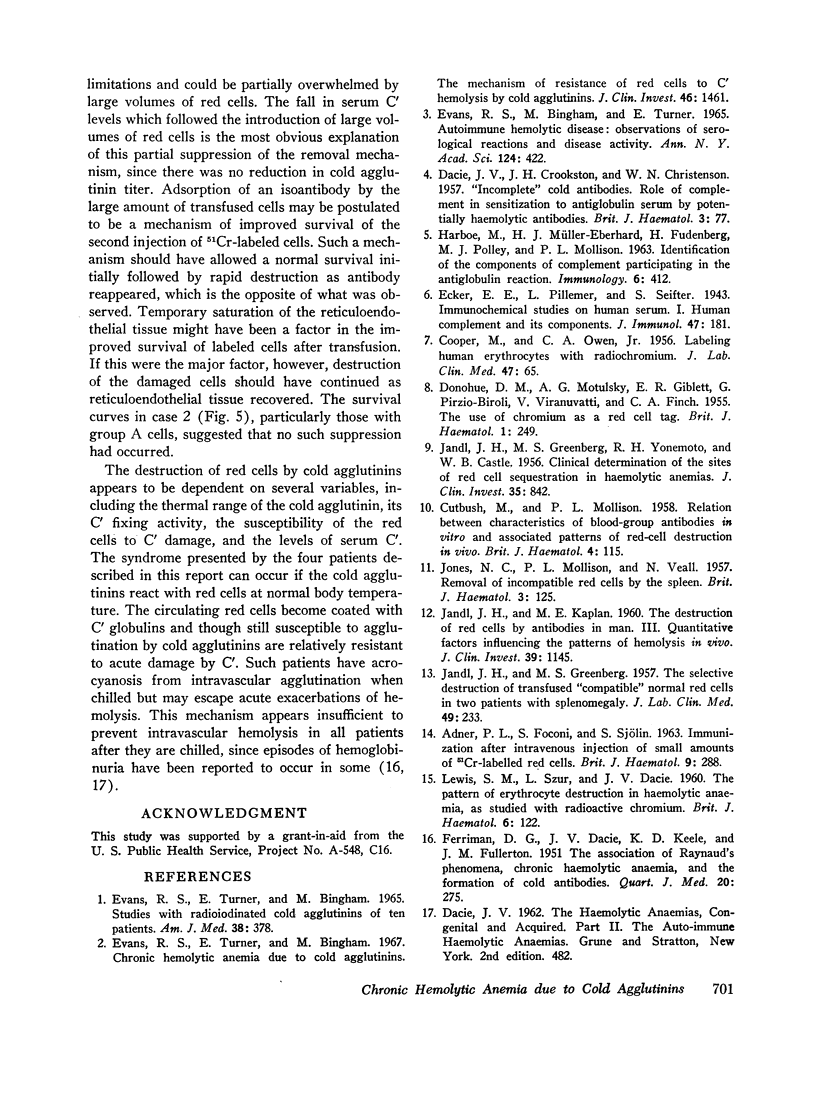
Selected References
These references are in PubMed. This may not be the complete list of references from this article.
- ADNER P. L., FOCONI S., SJOLIN S. Immunization after intravenous injection of small amounts of 51Cr-labelled red cells. Br J Haematol. 1963 Jul;9:288–298. doi: 10.1111/j.1365-2141.1963.tb06553.x. [DOI] [PubMed] [Google Scholar]
- COOPER M., OWEN C. A., Jr Labeling human erythrocytes with radiochromium. J Lab Clin Med. 1956 Jan;47(1):65–71. [PubMed] [Google Scholar]
- CUTBUSH M., MOLLISON P. L. Relation between characteristics of blood-group antibodies in vitro and associated patterns of redcell destruction in vivo. Br J Haematol. 1958 Apr;4(2):115–137. doi: 10.1111/j.1365-2141.1958.tb03843.x. [DOI] [PubMed] [Google Scholar]
- DACIE J. V., CROOKSTON J. H., CHRISTENSON W. N. Incomplete cold antibodies role of complement in sensitization to antiglobulin serum by potentially haemolytic antibodies. Br J Haematol. 1957 Jan;3(1):77–87. doi: 10.1111/j.1365-2141.1957.tb05773.x. [DOI] [PubMed] [Google Scholar]
- DONOHUE D. M., MOTULSKY A. G., GIBLETT E. R., PIRZIO-BIROLI G., VIRANUVATTI V., FINCH C. A. The use of chromium as red-cell tag. Br J Haematol. 1955 Jul;1(3):249–263. doi: 10.1111/j.1365-2141.1955.tb05508.x. [DOI] [PubMed] [Google Scholar]
- EVANS R. S., TURNER E., BINGHAM M. STUDIES WITH RADIOIODINATED COLD AGGLUTININS OF TEN PATIENTS. Am J Med. 1965 Mar;38:378–395. doi: 10.1016/0002-9343(65)90146-4. [DOI] [PubMed] [Google Scholar]
- Evans R. S., Bingham M., Turner E. Autoimmune hemolytic disease: observations of serological reactions and disease activity. Ann N Y Acad Sci. 1965 Jun 30;124(2):422–440. doi: 10.1111/j.1749-6632.1965.tb18975.x. [DOI] [PubMed] [Google Scholar]
- Evans R. S., Turner E., Bingham M. Chronic hemolytic anemia due to cold agglutinins: the mechanism of resistance of red cells to C' hemolysis by cold agglutinins. J Clin Invest. 1967 Sep;46(9):1461–1474. doi: 10.1172/JCI105638. [DOI] [PMC free article] [PubMed] [Google Scholar]
- FERRIMAN D. G., DACIE J. V., KEELE K. D., FULLERTON J. M. The association of Raynaud's phenomena, chronic haemolytic anaemia, and the formation of cold antibodies. Q J Med. 1951 Jul;20(79):275–292. [PubMed] [Google Scholar]
- GREENBERG M. S., JANDL J. H. The selective destruction of transfused compatible normal red cells in two patients with splenomegaly. J Lab Clin Med. 1957 Feb;49(2):233–245. [PubMed] [Google Scholar]
- HARBOE M., MUELLER-EBERHARD H. J., FUDENBERG H., POLLY M. J., MOLLISON P. L. IDENTIFICATION OF THE COMPONENTS OF COMPLEMENT PARTICIPATING IN THE ANTIGLOBULIN REACTION. Immunology. 1963 Jul;6:412–420. [PMC free article] [PubMed] [Google Scholar]
- JANDL J. H., GREENBERG M. S., YONEMOTO R. H., CASTLE W. B. Clinical determination of the sites of red cell sequestration in hemolytic anemias. J Clin Invest. 1956 Aug;35(8):842–867. doi: 10.1172/JCI103338. [DOI] [PMC free article] [PubMed] [Google Scholar]
- JANDL J. H., KAPLAN M. E. The destruction of red cells by antibodies in man. III. Quantitative factors influencing the patterns of hemolysis in vivo. J Clin Invest. 1960 Jul;39:1145–1156. doi: 10.1172/JCI104129. [DOI] [PMC free article] [PubMed] [Google Scholar]
- JONES N. C., MOLLISON P. L., VEALL N. Removal of incompatible red cells by the spleen. Br J Haematol. 1957 Apr;3(2):125–133. doi: 10.1111/j.1365-2141.1957.tb05779.x. [DOI] [PubMed] [Google Scholar]
- LEWIS S. M., SZUR L., DACIE J. V. The pattern of erythrocyte destruction in haemolytic anaemia, as studied with radioactive chromium. Br J Haematol. 1960 Apr;6:122–139. doi: 10.1111/j.1365-2141.1960.tb06224.x. [DOI] [PubMed] [Google Scholar]


